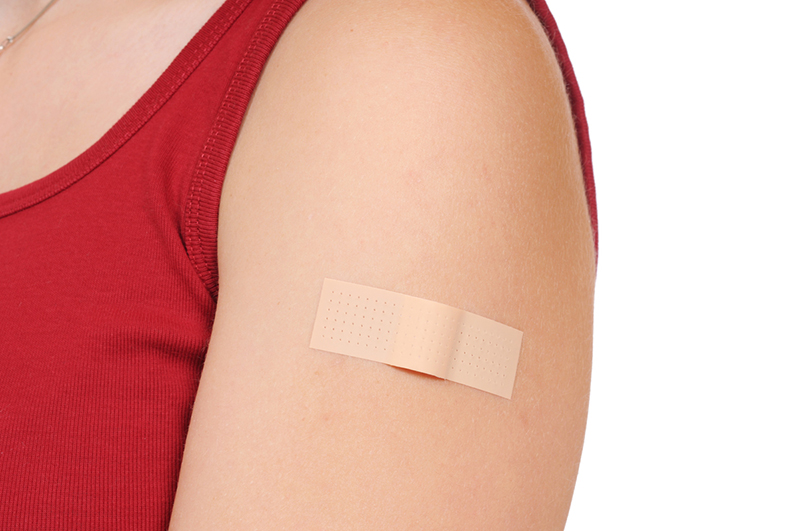NIH-funded research shows infection can affect male fertility

COVID-19 vaccination does not affect the chances of conceiving a child, according to a study of more than 2,000 couples that was funded by the National Institutes of Health. Researchers found no differences in the chances of conception if either male or female partner had been vaccinated, compared to unvaccinated couples. However, couples had a slightly lower chance of conception if the male partner had been infected with SARS-CoV-2 within 60 days before a menstrual cycle, suggesting that COVID-19 could temporarily reduce male fertility. The study was conducted by Amelia K. Wesselink, Ph.D., of Boston University, and colleagues. It appears in the American Journal of Epidemiology.
“The findings provide reassurance that vaccination for couples seeking pregnancy does not appear to impair fertility,” said Diana Bianchi, M.D., director of NIH’s Eunice Kennedy Shriver National Institute of Child Health and Human Development, which funded the study. “They also provide information for physicians who counsel patients hoping to conceive.”
Researchers analyzed data from the Pregnancy Study Online (PRESTO) 
Study participants identified as female and were 21 to 45 years old. They completed a questionnaire on their income and education levels, lifestyle, and reproductive and medical histories, including whether or not they were vaccinated against COVID-19 and whether they or their partners had ever tested positive for SARS-CoV-2. They also invited their male partners aged 21 or older to complete a similar questionnaire. Female partners completed follow-up questionnaires every eight weeks until they became pregnant, or up to 12 months if they did not.
The investigators found no major differences in conception rates per menstrual cycle between unvaccinated and vaccinated couples in which at least one partner had received at least one dose of the vaccine.
Results were similar when the investigators looked at factors that could potentially influence the results, such as whether study participants or their partners received one or two doses of a vaccine, the type of vaccine they received, how recently they were vaccinated, whether they were American or Canadian, whether they were health care workers, or they were couples without a history of infertility.
Overall, testing positive for SARS-CoV-2 infection was not associated with a difference in conception. However, couples in which the male partner had tested positive within 60 days of a given cycle were 18% less likely to conceive in that cycle. There was no difference in conception rates for couples in which the male partner had tested positive more than 60 days before a cycle, compared to couples in which the male partner had not tested positive.
Fever, known to reduce sperm count and motility, is common during SARS-CoV-2 infection and so could explain the temporary decline in fertility the researchers observed in couples in which the male partner had a recent infection. Other possible reasons for a decline in fertility among male partners who recently tested positive could be inflammation in the testes and nearby tissues and erectile dysfunction, all common after SARS-CoV-2 infection. The researchers noted that this short-term decline in male fertility could potentially be avoided by vaccination.
The researchers concluded that their results suggest that vaccination against COVID-19 had no harmful association with fertility. Vaccination against COVID-19 also could help avert the risks that SARS-CoV-2 infection poses for maternal and fetal health.
Reference
Wesselink AK, et al. A prospective cohort study of COVID-19 vaccination, SARS-CoV-2 infection, and fertility. American Journal of Epidemiology. 2022. http://doi.org/10.1093/aje/kwac011
###
About the Eunice Kennedy Shriver National Institute of Child Health and Human Development (NICHD): NICHD leads research and training to understand human development, improve reproductive health, enhance the lives of children and adolescents, and optimize abilities for all. For more information, visit https://www.nichd.nih.gov.
About the National Institutes of Health (NIH): NIH, the nation’s medical research agency, includes 27 Institutes and Centers and is a component of the U.S. Department of Health and Human Services. NIH is the primary federal agency conducting and supporting basic, clinical, and translational medical research, and is investigating the causes, treatments, and cures for both common and rare diseases. For more information about NIH and its programs, visit https://www.nih.gov.

 BACK TO TOP
BACK TO TOP